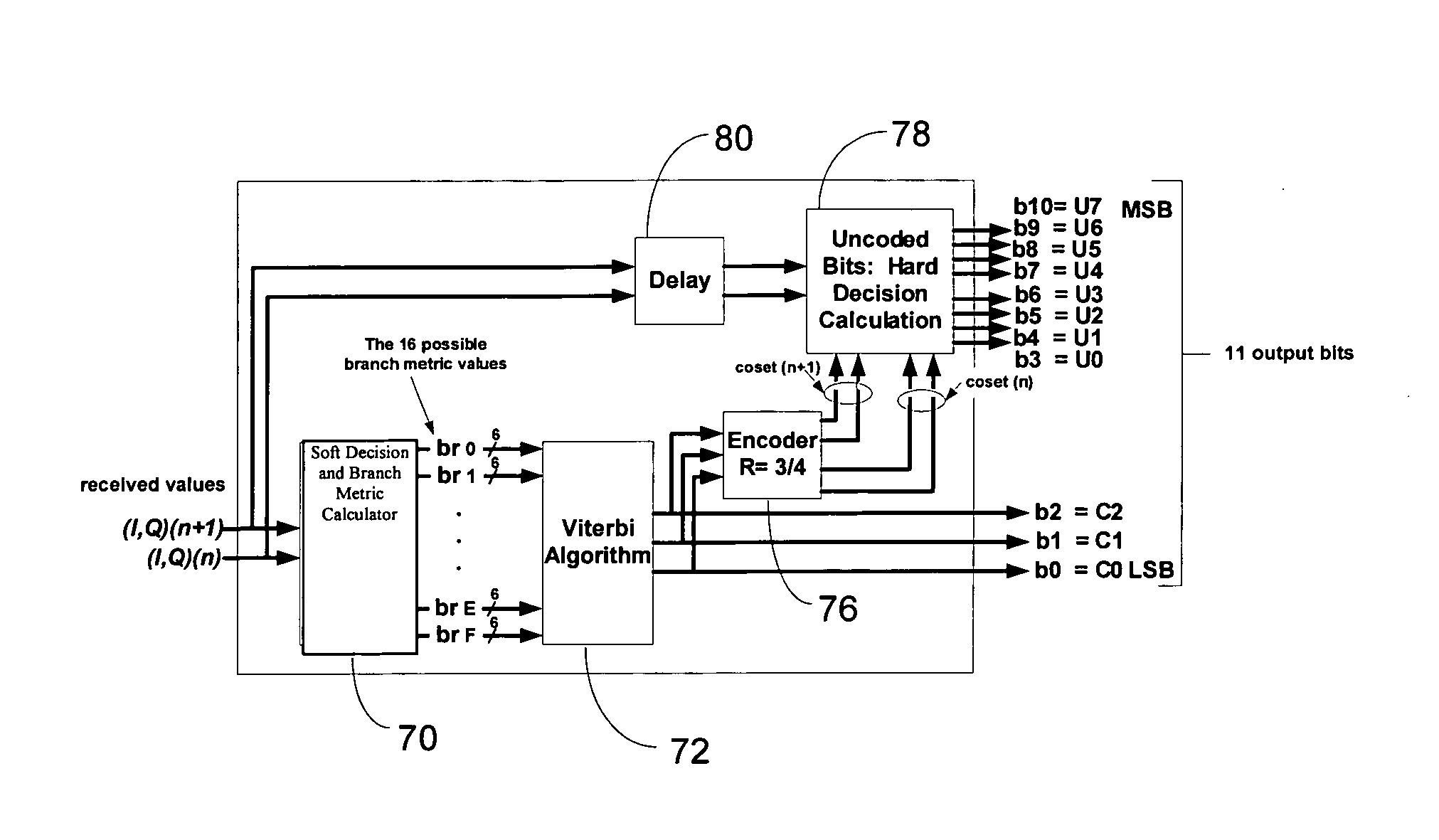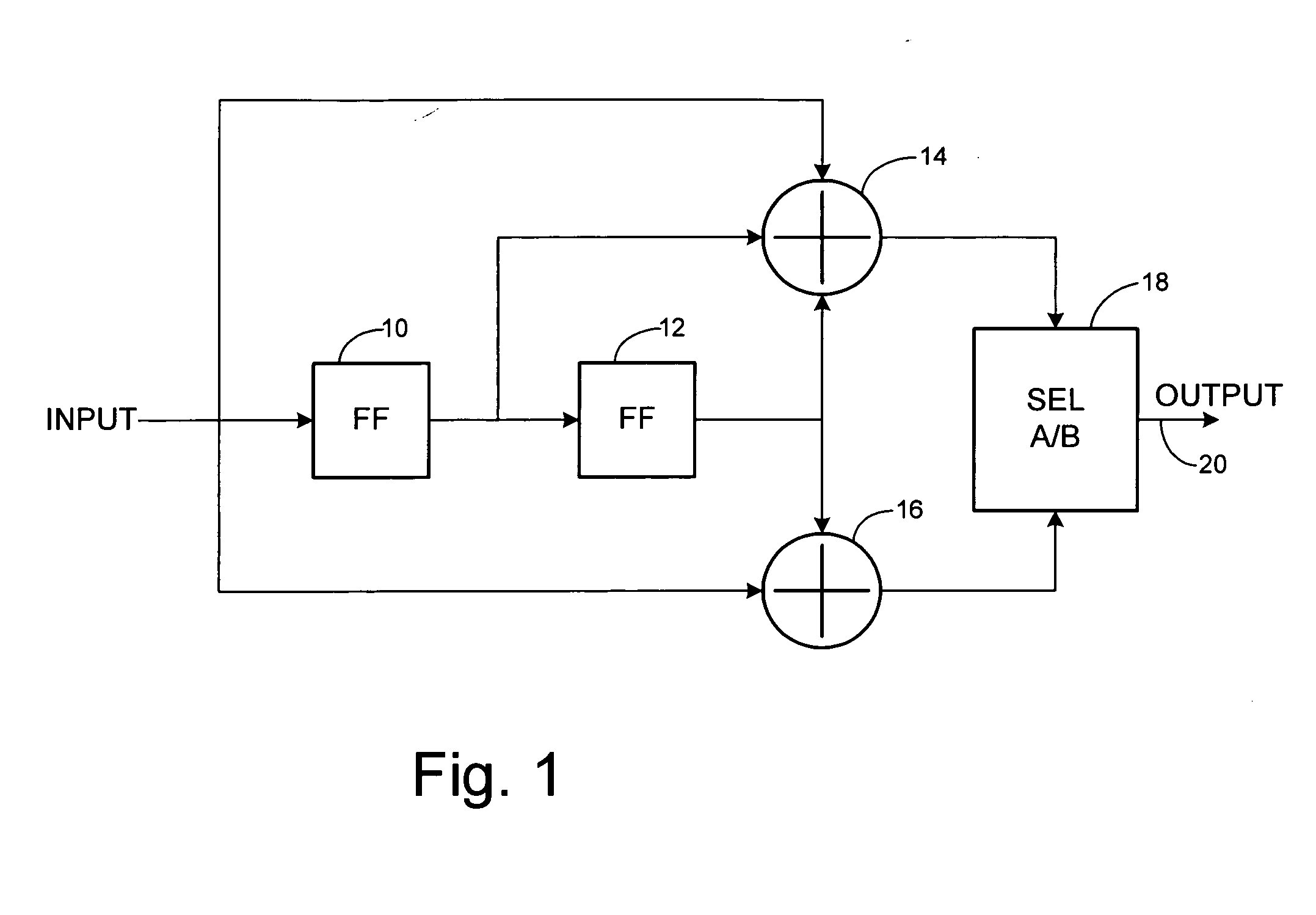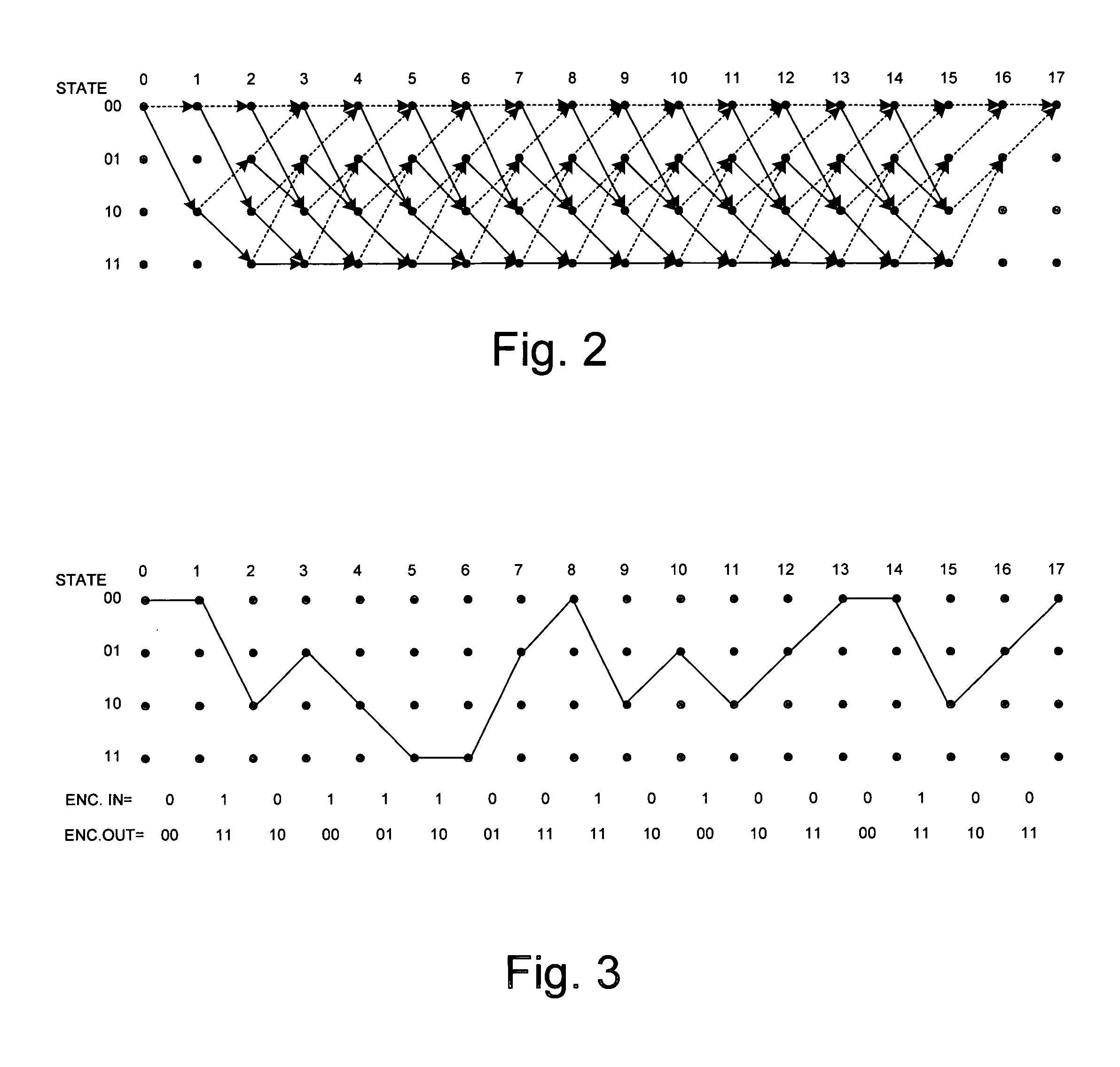Efficient decoding of trellis coded modulation waveforms
a technology of trellis code and waveform, applied in the direction of amplitude demodulation, code conversion, coding, etc., can solve the problems of significant bandwidth limitations, well known limitations in the transmission of data through digital communication channels, and inherent transponder power limitations, so as to reduce the computational complexity, and reduce the ber performance
- Summary
- Abstract
- Description
- Claims
- Application Information
AI Technical Summary
Benefits of technology
Problems solved by technology
Method used
Image
Examples
Embodiment Construction
[0032]As shown in the drawings for purposes of illustration, the present invention pertains to an improved technique for decoding digital information signals that have been encoded by trellis coded modulation (TCM). In TCM, which is a form of forward error correction (FEC) encoding, digital signals are convolutionally encoded to contain redundant information. The encoded and uncoded bits are mapped onto the signal constellation in such a manner as to maximize free Euclidean distance. Data signals so encoded are less susceptible to distortion by noise in a communication channel. During decoding at the receiving end of the communication channel, the redundant information is used to recover the original data, even if some of the data bits are erroneous or missing from the data stream.
[0033]Although the process of convolutional encoding is relatively simple to implement in hardware or software form, decoding TCM signals is computationally complex. A modified form of TCM known as pragmat...
PUM
 Login to View More
Login to View More Abstract
Description
Claims
Application Information
 Login to View More
Login to View More - R&D
- Intellectual Property
- Life Sciences
- Materials
- Tech Scout
- Unparalleled Data Quality
- Higher Quality Content
- 60% Fewer Hallucinations
Browse by: Latest US Patents, China's latest patents, Technical Efficacy Thesaurus, Application Domain, Technology Topic, Popular Technical Reports.
© 2025 PatSnap. All rights reserved.Legal|Privacy policy|Modern Slavery Act Transparency Statement|Sitemap|About US| Contact US: help@patsnap.com



